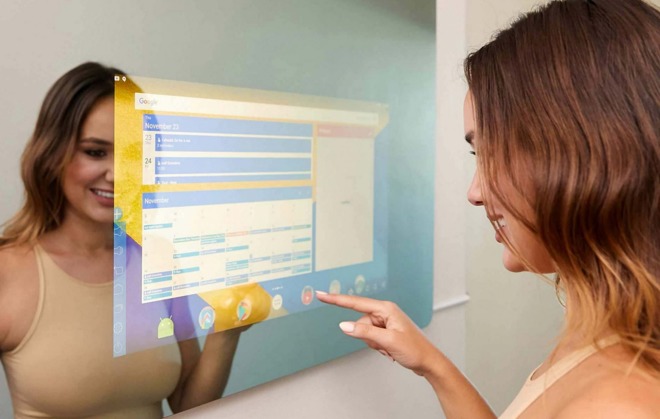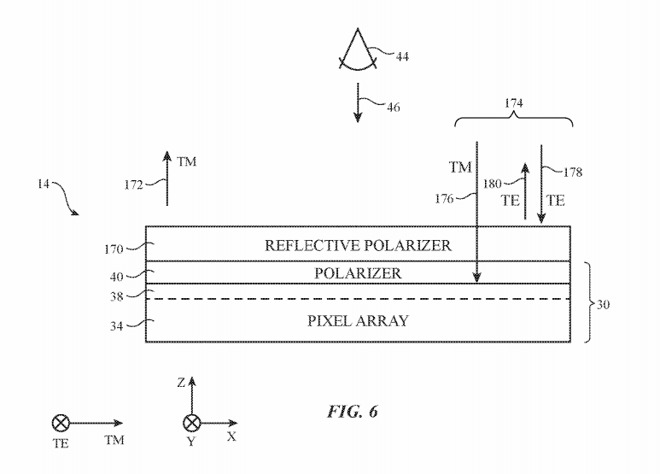Apple is considering the possibility of producing devices that have a screen with adjustable reflectiveness, one that could potentially switch between displaying information to the user and acting as a mirror.

A patent application for an "Electronic Device with Adjustable Reflective Display", published on Thursday by the U.S. Patent and Trademark Office, describes the use of an extra layer added to a display assembly. The extra layer sits above the pixel array, used to create the image seen by the device's user.
The layer could consist of linear and reflective polarizers, a liquid crystal layer for managing the level of polarization, and a switchable polarizer that uses both liquid crystal and dichroic dye molecules. In theory, the layer would be controllable, switchable between letting the light from the pixel array through to the user at one extreme, and preventing light through while reflecting ambient light from the environment.
In essence, the panel would switch from a viewable screen to something resembling a mirror.

According to the filing, the layer could be controllable to a level that parts of the screen would show images and other content like a normal display, while other areas are reflective. The mirrored areas could change status from on to off, or shifted to other parts of the screen, if locations where content needs to be visible are altered.
Some elements of the filing also refer to how the user would interact with such a display, including the use of head-tracking, gaze-tracking, facial recognition, and hand gestures, vis the use of a built-in camera and other sensors. For example, by tracking the user's gaze, it could detect if the user is looking at a notification icon for a designated period of time, which could then trigger other content to appear on-screen.
A simple flowchart suggests the kind of actions that could occur based on a detected input, such as displaying news, notifications, or more icons for further interactions.
The controllable reflectiveness has relatively few applications in Apple's existing product line, but could be useful for aesthetic reasons. For example, an iPhone display could be made to be mirror-like when not in use, rather than appearing as a black screen.
Outside of Apple's current ecosystem, it could be used to produce a smart mirror system, a product category that has yet to really take off, despite the various concepts created by firms over the years, as well as home-made versions. The technology could potentially provide a much clearer image to end users if used in this way, as current systems require the light to pass through static reflective materials, which changes the appearance of content.
This could also be useful for commercial purposes, including kiosks and product displays that provide information to customers.
Apple regularly applies for patents across many different subject areas on a weekly basis, sometimes including new concepts, but with few actually making it to market. The existence of a patent or application is not a guarantee that it will be used in a consumer device in the future.